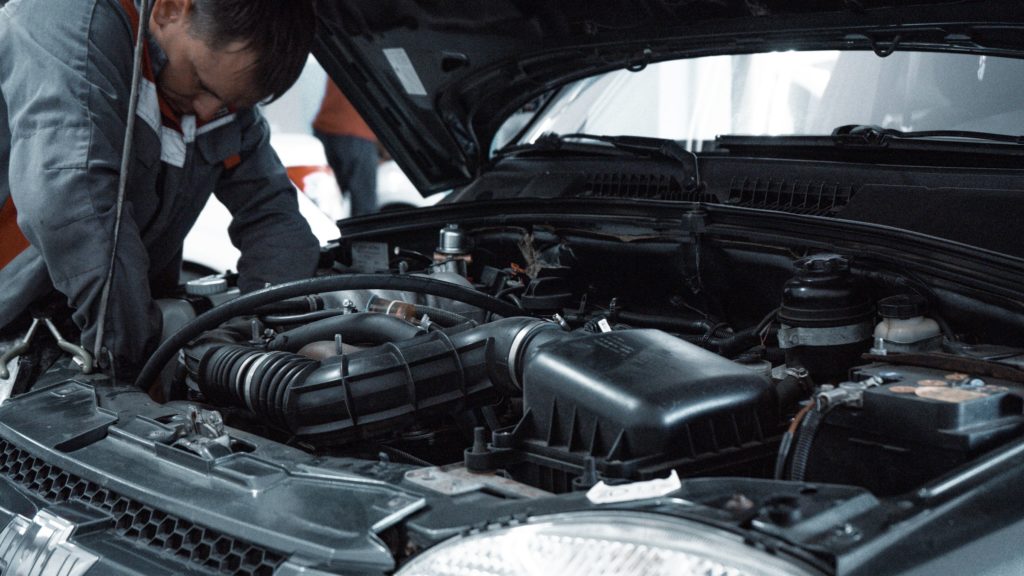When Should You Get A Tune Up On Your Car

Knowing when your car needs a tune-up can save you money, prevent breakdowns, and extend the life of your vehicle. Modern cars are incredibly sophisticated, but even the most reliable machines require regular maintenance. This article provides a practical guide for car owners and mechanics on identifying when a tune-up is necessary, covering common symptoms, causes, and fixes.
Understanding the Modern "Tune-Up"
The term "tune-up" has evolved over time. In older vehicles, a tune-up involved adjusting the carburetor, distributor, and timing. Modern cars, with their computerized engine management systems, rarely need those specific adjustments. Today, a tune-up typically encompasses replacing spark plugs, air filters, fuel filters (if applicable), checking and replacing fluids, and inspecting various components for wear and tear.
Key Indicators That Your Car Needs a Tune-Up
Several symptoms can indicate that your car is due for a tune-up. Recognizing these early can prevent more serious problems down the road.
1. Decreased Fuel Efficiency
Problem: Notice a significant drop in your gas mileage? You might be filling up more frequently. Cause: Dirty air filters restrict airflow, leading to incomplete combustion. Worn spark plugs don't ignite fuel efficiently. A faulty oxygen sensor can misreport the air-fuel mixture, causing the engine to run rich (too much fuel). Solution: Replace the air filter. Install new spark plugs (use the manufacturer-recommended type). Have the oxygen sensor checked and replaced if necessary. For example, a 2015 Honda Civic experiencing a drop from 35 mpg to 28 mpg might benefit from these simple replacements.
2. Rough Idling
Problem: The engine shakes or vibrates excessively when the car is stopped or idling. Cause: Misfiring cylinders due to worn spark plugs, vacuum leaks, or a clogged fuel injector. A faulty idle air control valve (IAC) can also cause rough idling. Solution: Check and replace spark plugs. Inspect vacuum hoses for cracks and leaks. Clean or replace fuel injectors. Diagnose the IAC valve – cleaning or replacement may be required. A classic example is a 2010 Toyota Camry with 100,000 miles exhibiting a shaky idle; often, new spark plugs and a cleaned throttle body resolve the issue.
3. Difficulty Starting
Problem: The engine takes longer to start than usual, or it cranks but doesn't start at all. Cause: Weak battery, corroded battery terminals, faulty starter motor, or a failing fuel pump. In some cases, even worn spark plugs can contribute to hard starting. Solution: Test the battery and replace it if necessary. Clean battery terminals. Have the starter motor and fuel pump tested. Replace spark plugs. A common scenario involves a 2018 Ford F-150 struggling to start in cold weather – a new battery and spark plugs might be the solution.
4. Stalling
Problem: The engine dies unexpectedly while driving or idling. Cause: Clogged fuel filter, faulty fuel pump, vacuum leaks, or a malfunctioning mass airflow (MAF) sensor. Solution: Replace the fuel filter. Test the fuel pump's pressure output. Inspect vacuum hoses. Clean or replace the MAF sensor. For instance, a 2012 Chevrolet Malibu stalling intermittently could be caused by a failing fuel pump relay or a dirty MAF sensor.
5. Check Engine Light
Problem: The check engine light illuminates on the dashboard. Cause: A wide range of issues, from minor problems like a loose gas cap to more serious engine malfunctions. The light often indicates a misfire, which directly relates to tune-up components. Solution: Use an OBD-II scanner to retrieve the diagnostic trouble code (DTC). Research the code to understand the potential problem. Address the underlying issue based on the DTC. Many auto parts stores will offer free code scanning. For example, a "P0301" code on a 2016 Nissan Altima indicates a misfire in cylinder #1, which could be due to a bad spark plug, ignition coil, or fuel injector.
6. Poor Acceleration
Problem: The car feels sluggish when accelerating, or it lacks power when climbing hills. Cause: Clogged air filter, worn spark plugs, a failing catalytic converter, or a clogged fuel filter. Solution: Replace the air filter and spark plugs. Have the catalytic converter inspected. Replace the fuel filter. A 2008 Jeep Wrangler experiencing reduced power on inclines might benefit from a new catalytic converter and spark plugs.
Scheduled Maintenance vs. Symptom-Based Tune-Ups
While addressing specific symptoms is crucial, following the manufacturer's recommended maintenance schedule is essential for preventing problems. Consult your owner's manual for recommended intervals for spark plug replacement, fluid changes, and other tune-up items. Proactive maintenance is always cheaper than reactive repairs.
Keeping Your Car in Top Condition
Here are some tips to keep your car running smoothly:
- Follow the manufacturer's maintenance schedule.
- Use high-quality parts and fluids.
- Check fluid levels regularly (oil, coolant, brake fluid, power steering fluid).
- Address problems promptly. Don't ignore warning signs.
- Keep your car clean, inside and out. This helps prevent rust and corrosion.
- Learn basic car maintenance skills. Changing your own oil, air filter, and spark plugs can save you money.
By paying attention to your car's performance and following a regular maintenance schedule, you can ensure its longevity and reliability. When in doubt, consult a qualified mechanic for diagnosis and repair. Regular maintenance is an investment in your vehicle's future.
